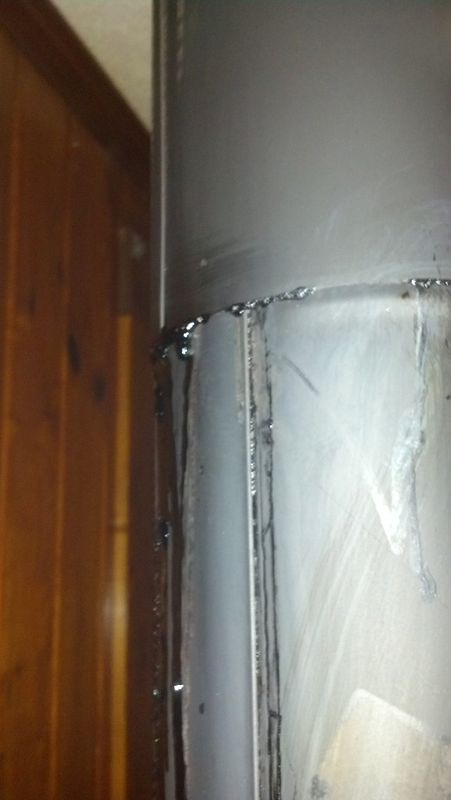Stove side goes inside the chimney side...hope that makes sense?
Now, where is the creosote coming from is the next question?
Let's assume this is a normal amount of creosote (i.e. very little), so that everything is burning OK with the stove. Creosote forms when the smoke cools before leaving the chimney, as the moisture and volatile unburned oils condenses out it takes solid particles with it and deposits them on the side of the chimney. This can flow like tar when warm.
On an outside chimney like mine, what there is should flow down the chimney, past the thimble, and to the clean out. The only thing I get in my single wall stove pipe between the stove and thimble is a build of ash that flies up there when I'm cleaning the stove.
I'm not sure how folks with chimney liners or pipes that go straight up and through a chimney in the roof deal with it.
























































